| Citation: |
Yujie Hu, Zhixiang Chen, Yi Xiang, Chuanhui Cheng, Weifeng Liu, Weishen Zhan. Enhanced efficiency of the Sb2Se3 thin-film solar cell by the anode passivation using an organic small molecular of TCTA[J]. Journal of Semiconductors, 2023, 44(8): 082701. doi: 10.1088/1674-4926/44/8/082701
****
Y J Hu, Z X Chen, Y Xiang, C H Cheng, W F Liu, W S Zhan. Enhanced efficiency of the Sb2Se3 thin-film solar cell by the anode passivation using an organic small molecular of TCTA[J]. J. Semicond, 2023, 44(8): 082701. doi: 10.1088/1674-4926/44/8/082701
|
Enhanced efficiency of the Sb2Se3 thin-film solar cell by the anode passivation using an organic small molecular of TCTA
DOI: 10.1088/1674-4926/44/8/082701
More Information
-
Abstract
Antimony selenide (Sb2Se3) is an emerging solar cell material. Here, we demonstrate that an organic small molecule of 4, 4', 4''-tris(carbazol-9-yl)-triphenylamine (TCTA) can efficiently passivate the anode interface of the Sb2Se3 solar cell. We fabricated the device by the vacuum thermal evaporation, and took ITO/TCTA (3.0 nm)/Sb2Se3 (50 nm)/C60 (5.0 nm)/Alq3 (3.0 nm)/Al as the device architecture, where Alq3 is the tris(8-hydroxyquinolinato) aluminum. By introducing a TCTA layer, the open-circuit voltage is raised from 0.36 to 0.42 V, and the power conversion efficiency is significantly improved from 3.2% to 4.3%. The TCTA layer not only inhibits the chemical reaction between the ITO and Sb2Se3 during the annealing process but it also blocks the electron diffusion from Sb2Se3 to ITO anode. The enhanced performance is mainly attributed to the suppression of the charge recombination at the anode interface.-
Keywords:
- Sb2Se3,
- thin-film solar cell,
- passivation
-
References
[1] Li Z Q, Liang X Y, Li G, et al. 9.2%-efficient core-shell structured antimony selenide nanorod array solar cells. Nat Commun, 2019, 10, 125 doi: 10.1038/s41467-018-07903-6[2] Jiménez T, Seuret-Jiménez D, Vigil-Galán O, et al. Sb2(S1–xex)3 solar cells: The impact of radiative and non-radiative loss mechanisms. J Phys D, 2018, 51, 435501 doi: 10.1088/1361-6463/aaddea[3] Tang R F, Wang X M, Lian W T, et al. Hydrothermal deposition of antimony selenosulfide thin films enables solar cells with 10% efficiency. Nat Energy, 2020, 5, 587 doi: 10.1038/s41560-020-0652-3[4] Zhao Y Q, Wang S Y, Jiang C H, et al. Regulating energy band alignment via alkaline metal fluoride assisted solution post-treatment enabling Sb2(S, Se)3 solar cells with 10.7% efficiency. Adv Energy Mater, 2022, 12, 2103015 doi: 10.1002/aenm.202103015[5] Zhao Y Q, Wang S Y, Li C, et al. Regulating deposition kinetics via a novel additive-assisted chemical bath deposition technology enables fabrication of 10.57%-efficiency Sb2Se3 solar cells. Energy Environ Sci, 2022, 15, 5118 doi: 10.1039/D2EE02261C[6] Luo M, Leng M Y, Liu X S, et al. Thermal evaporation and characterization of superstrate CdS/Sb2Se3 solar cells. Appl Phys Lett, 2014, 104, 173904 doi: 10.1063/1.4874878[7] Kumar V, Artegiani E, Punathil P, et al. Analysis of Se Co-evaporation and post-selenization for Sb2Se3-based solar cells. ACS Appl Energy Mater, 2021, 4, 12479 doi: 10.1021/acsaem.1c02301[8] Zhou Y, Wang L, Chen S Y, et al. Thin-film Sb2Se3 photovoltaics with oriented one-dimensional ribbons and benign grain boundaries. Nat Photonics, 2015, 9, 409 doi: 10.1038/nphoton.2015.78[9] Ishaq M, Deng H, Yuan S J, et al. Efficient double buffer layer Sb2(SexS1–x)3 thin film solar cell via single source evaporation. Sol RRL, 2018, 2, 1800144 doi: 10.1002/solr.201800144[10] Li D B, Yin X X, Grice C R, et al. Stable and efficient CdS/Sb2Se3 solar cells prepared by scalable close space sublimation. Nano Energy, 2018, 49, 346 doi: 10.1016/j.nanoen.2018.04.044[11] Hutter O S, Phillips L J, Durose K, et al. 6.6% efficient antimony selenide solar cells using grain structure control and an organic contact layer. Sol Energy Mater Sol Cells, 2018, 188, 177 doi: 10.1016/j.solmat.2018.09.004[12] Li G, Li Z Q, Liang X Y, et al. Improvement in Sb2Se3 solar cell efficiency through band alignment engineering at the buffer/absorber interface. ACS Appl Mater Interfaces, 2019, 11, 828 doi: 10.1021/acsami.8b17611[13] Tao J H, Hu X B, Guo Y X, et al. Solution-processed SnO2 interfacial layer for highly efficient Sb2Se3 thin film solar cells. Nano Energy, 2019, 60, 802 doi: 10.1016/j.nanoen.2019.04.019[14] Kondrotas R, Zhang J, Wang C, et al. Growth mechanism of Sb2Se3 thin films for photovoltaic application by vapor transport deposition. Sol Energy Mater Sol Cells, 2019, 199, 16 doi: 10.1016/j.solmat.2019.04.024[15] Wen X X, Chen C, Lu S C, et al. Vapor transport deposition of antimony selenide thin film solar cells with 7.6% efficiency. Nat Commun, 2018, 9, 2179 doi: 10.1038/s41467-018-04634-6[16] Liang G X, Chen M D, Ishaq M, et al. Crystal growth promotion and defects healing enable minimum open-circuit voltage deficit in antimony selenide solar cells. Adv Sci, 2022, 9, e2105142 doi: 10.1002/advs.202105142[17] Liang G X, Zhang X H, Ma H L, et al. Facile preparation and enhanced photoelectrical performance of Sb2Se3 nano-rods by magnetron sputtering deposition. Sol Energy Mater Sol Cells, 2017, 160, 257 doi: 10.1016/j.solmat.2016.10.042[18] Liang G X, Zheng Z H, Fan P, et al. Thermally induced structural evolution and performance of Sb2Se3 films and nanorods prepared by an easy sputtering method. Sol Energy Mater Sol Cells, 2018, 174, 263 doi: 10.1016/j.solmat.2017.09.008[19] Tang R, Chen S, Zheng Z, et al. Heterojunction annealing enabling record open-circuit voltage in antimony triselenide solar cells. Adv Mater, 2022, 34, 2109078 doi: 10.1002/adma.202109078[20] Lin J H, Mahmood A, Chen G J, et al. Crystallographic orientation control and defect passivation for high-efficient antimony selenide thin-film solar cells. Mater Today Phys, 2022, 27, 100772 doi: 10.1016/j.mtphys.2022.100772[21] Chen S, Liu T X, Chen M D, et al. Crystal growth promotion and interface optimization enable highly efficient Sb2Se3 photocathodes for solar hydrogen evolution. Nano Energy, 2022, 99, 107417 doi: 10.1016/j.nanoen.2022.107417[22] Mavlonov A, Shukurov A, Raziq F, et al. Structural and morphological properties of PLD Sb2Se3 thin films for use in solar cells. Sol Energy, 2020, 208, 451 doi: 10.1016/j.solener.2020.08.004[23] Wang W H, Wang X M, Chen G L, et al. Promising Sb2(S,Se)3 solar cells with high open voltage by application of a TiO2/CdS double buffer layer. Sol RRL, 2018, 2, 1800208 doi: 10.1002/solr.201800208[24] Choi Y C, Lee Y H, Im S H, et al. Efficient inorganic-organic heterojunction solar cells employing Sb2(Sx/Se1–x) graded-composition sensitizers. Adv Energy Mater, 2014, 4, 1301680 doi: 10.1002/aenm.201301680[25] Zhou Y, Leng M Y, Xia Z, et al. Solution-processed antimony selenide heterojunction solar cells. Adv Energy Mater, 2014, 4, 1301846 doi: 10.1002/aenm.201301846[26] Wang L, Li D B, Li K H, et al. Stable 6%-efficient Sb2Se3 solar cells with a ZnO buffer layer. Nat Energy, 2017, 2, 1 doi: 10.1038/nenergy.2017.46[27] Chen S, Liu T X, Zheng Z H, et al. Recent progress and perspectives on Sb2Se3-based photocathodes for solar hydrogen production via photoelectrochemical water splitting. J Energy Chem, 2022, 67, 508 doi: 10.1016/j.jechem.2021.08.062[28] Park S N, Kim S Y, Lee S J, et al. Controlled synthesis of (hk1) preferentially oriented Sb2Se3 rod arrays by co-evaporation for photovoltaic applications. J Mater Chem A, 2019, 7, 25900 doi: 10.1039/C9TA08289A[29] El Radaf I M. Structural, optical, optoelectrical and photovoltaic properties of the thermally evaporated Sb2Se3 thin films. Appl Phys A, 2019, 125, 1 doi: 10.1007/s00339-018-2286-x[30] Kumar V, Artegiani E, Kumar A, et al. Effects of post-deposition annealing and copper inclusion in superstrate Sb2Se3 based solar cells by thermal evaporation. Sol Energy, 2019, 193, 452 doi: 10.1016/j.solener.2019.09.069[31] Black L E, van de Loo B W H, Macco B, et al. Explorative studies of novel silicon surface passivation materials: Considerations and lessons learned. Sol Energy Mater Sol Cells, 2018, 188, 182 doi: 10.1016/j.solmat.2018.07.003[32] Bonilla R S, Hoex B, Hamer P, et al. Dielectric surface passivation for silicon solar cells: A review. Phys Status Solidi A, 2017, 214, 1700293 doi: 10.1002/pssa.201700293[33] Wu R X, Liu W Q, Wang Z, et al. Highly efficient solution-processed white organic light-emitting diodes based on a co-host system by controlling energy transfer among different emitters. J Mater Chem C, 2022, 10, 5648 doi: 10.1039/D2TC00188H[34] Cheng C H, Li M, Song H Q, et al. Enhanced performance of the Sb2Se3 thin-film solar cell by organic molecule-induced crystallization and suppression of the interface recombination. ACS Appl Energy Mater, 2021, 4, 5079 doi: 10.1021/acsaem.1c00640[35] Li W H, Li M, Hu Y J, et al. Enhanced performance of antimony selenide thin film solar cell using PbI2 as a dopant. Appl Phys Lett, 2021, 118, 093903 doi: 10.1063/5.0040940[36] Nelson J. The physics of solar cells. London: Imperial College Press, 2003[37] Neamen D. Semiconductor physics and devices: basic principles. 4th ed. New York: McGraw Hill, 2011[38] Liu X S, Chen C, Wang L, et al. Improving the performance of Sb2Se3 thin film solar cells over 4% by controlled addition of oxygen during film deposition. Prog Photovolt: Res Appl, 2015, 23, 1828 doi: 10.1002/pip.2627 -
Supplements
 23010003suppl.pdf
23010003suppl.pdf

-
Proportional views





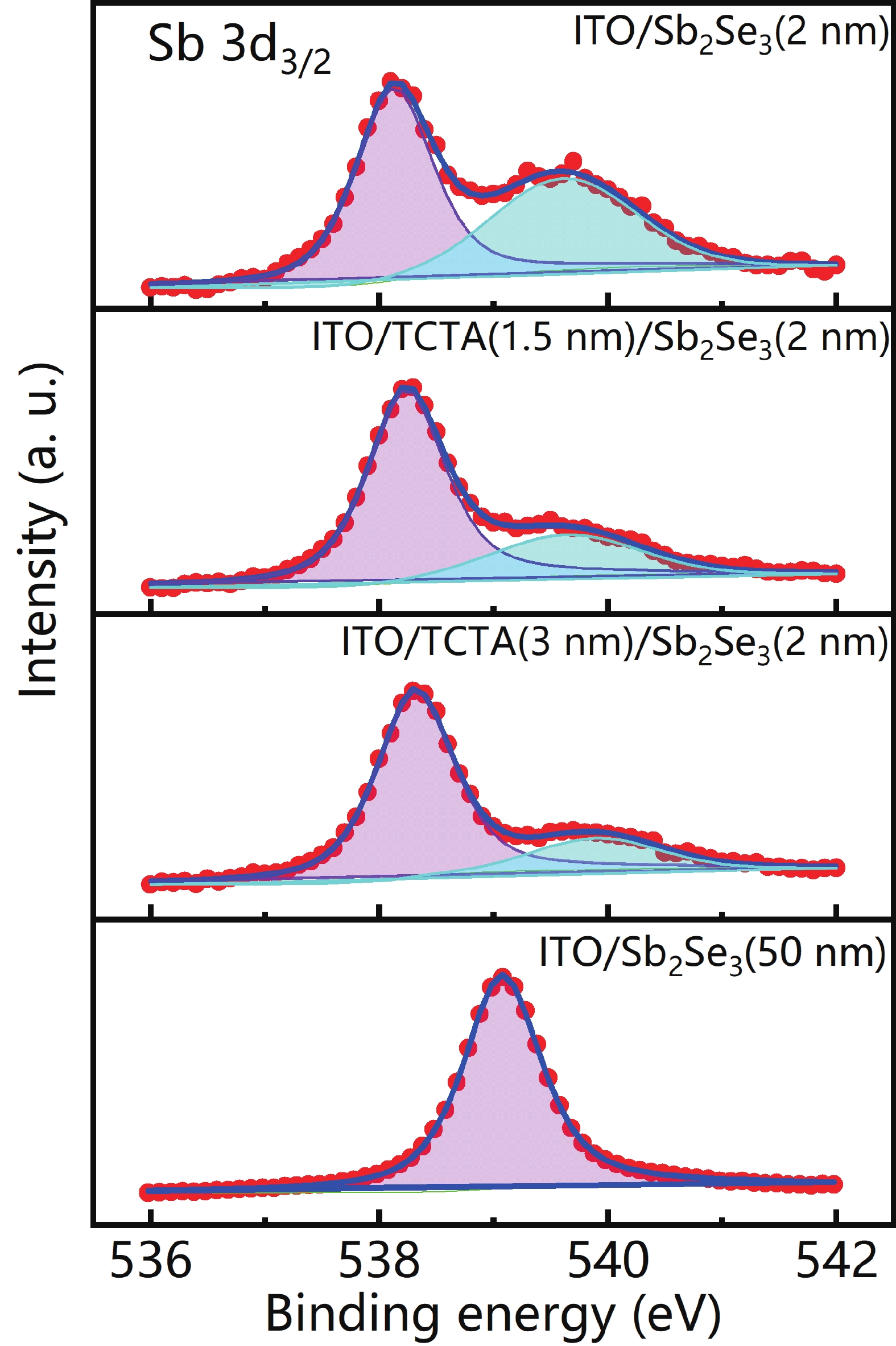
 DownLoad:
DownLoad:
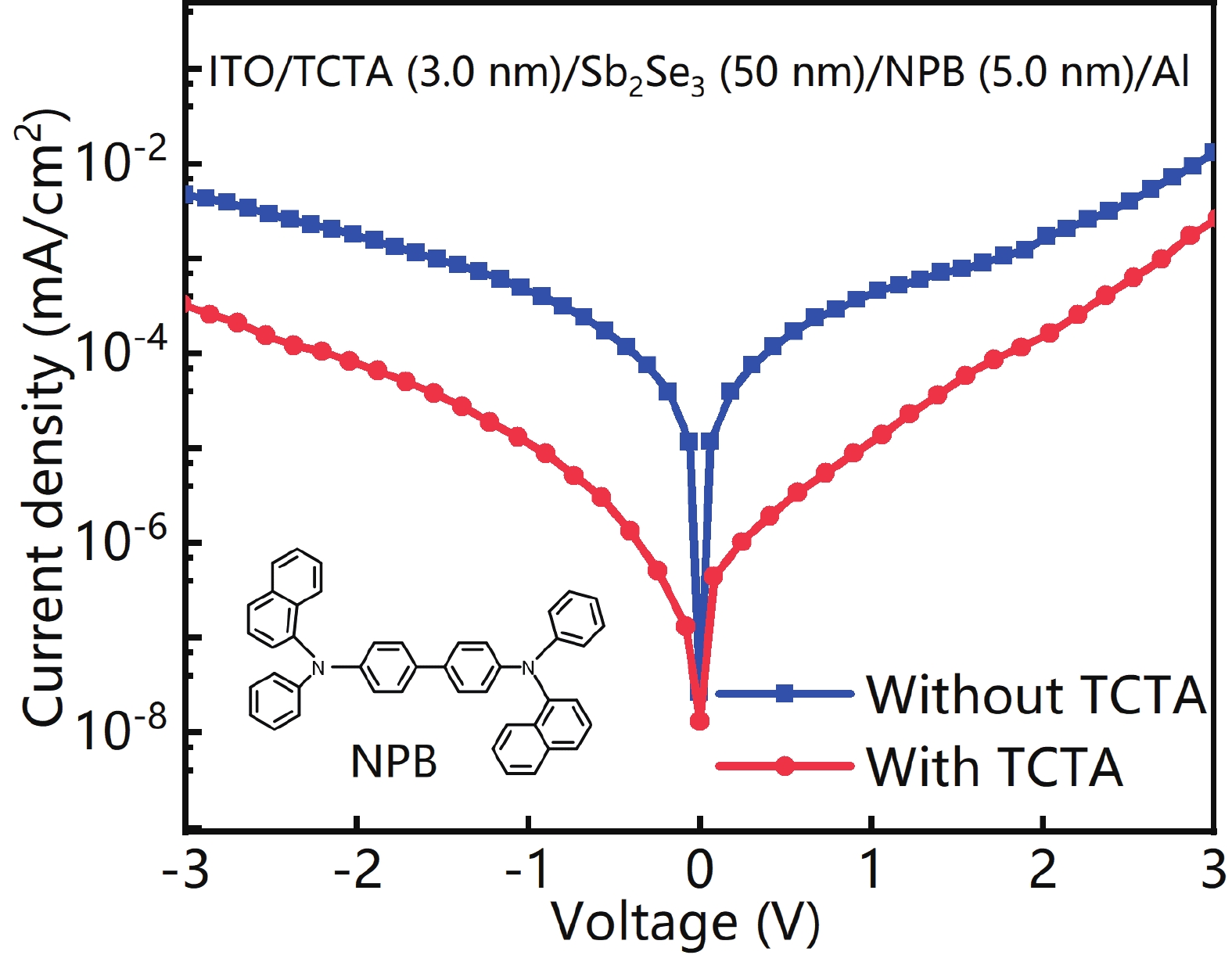
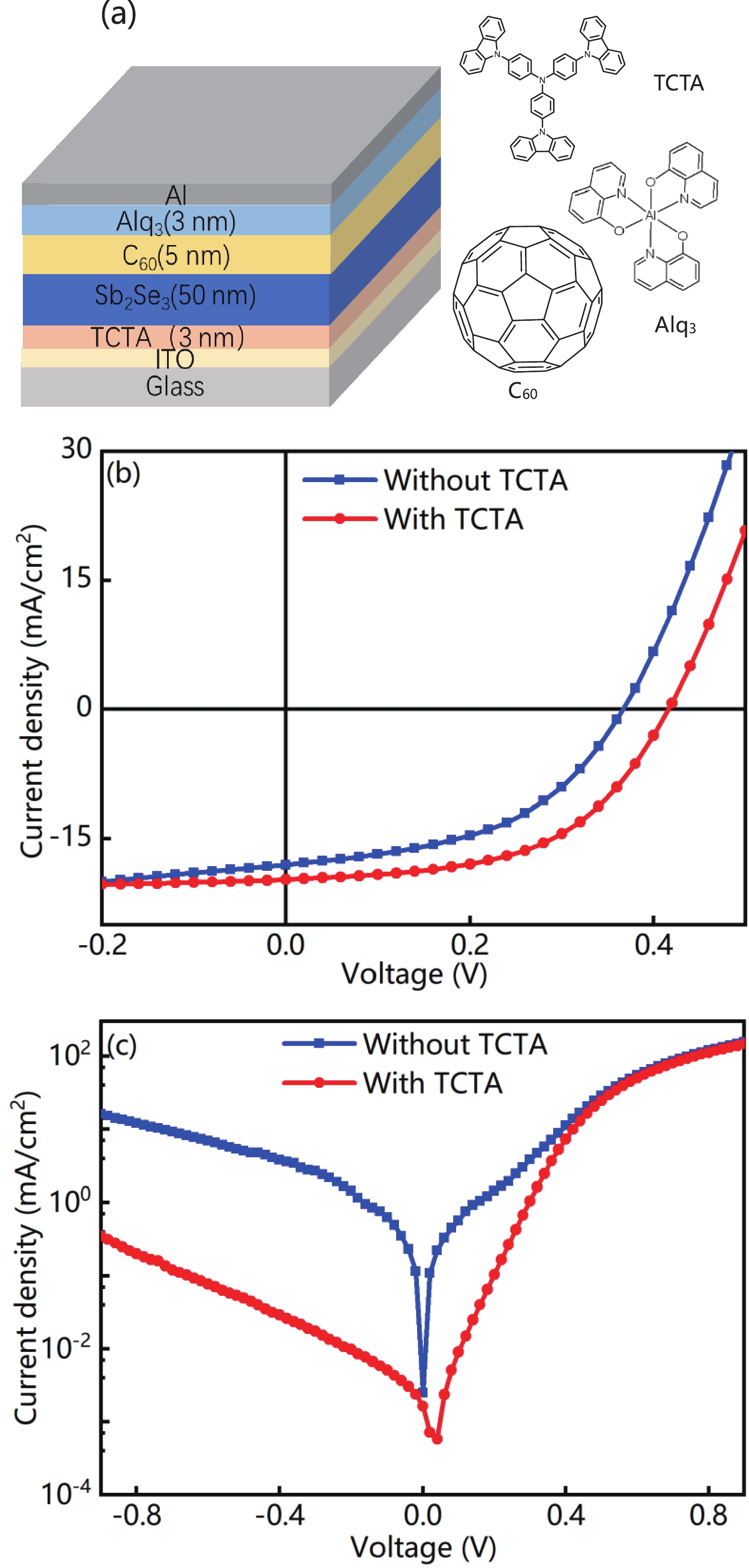
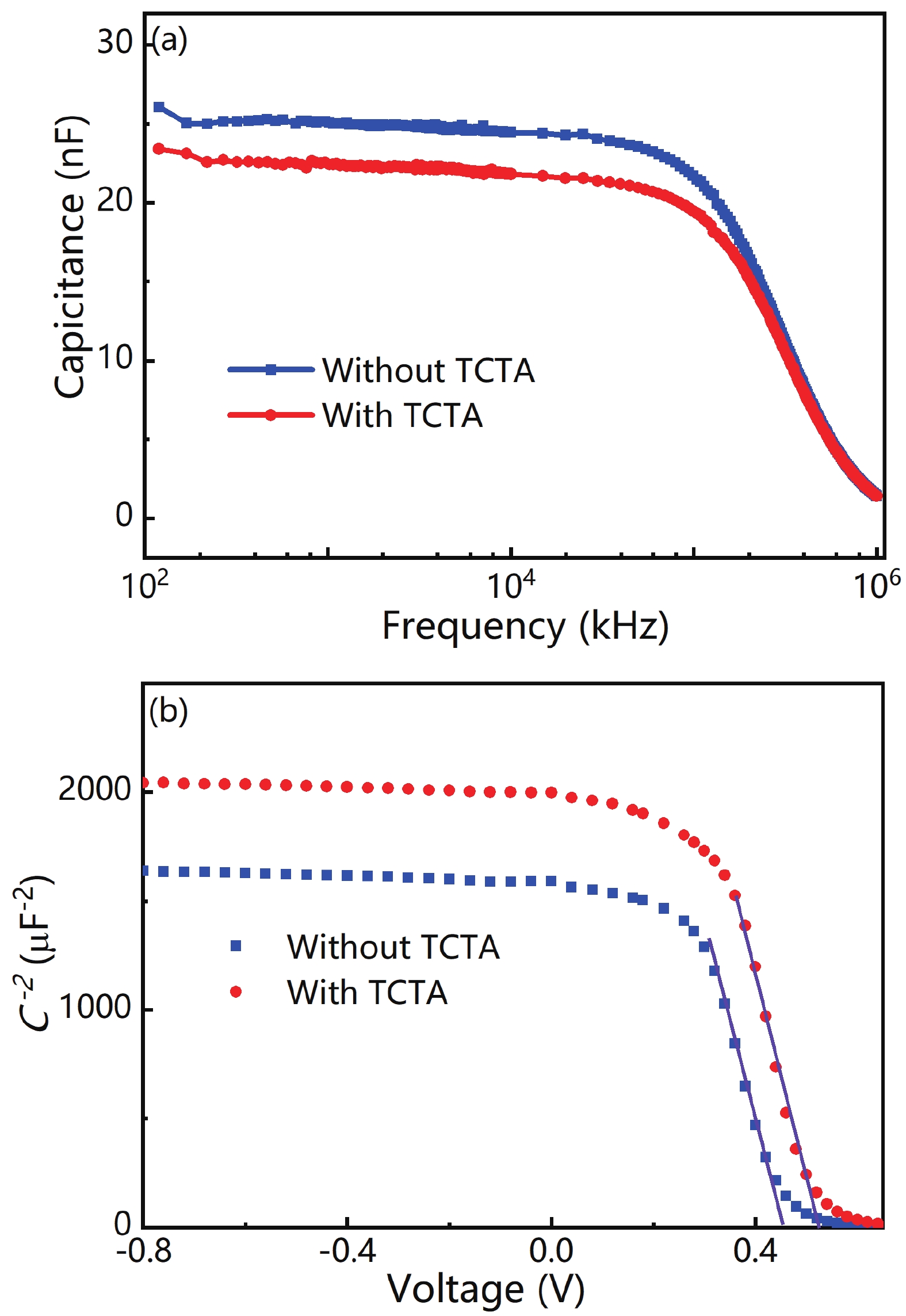
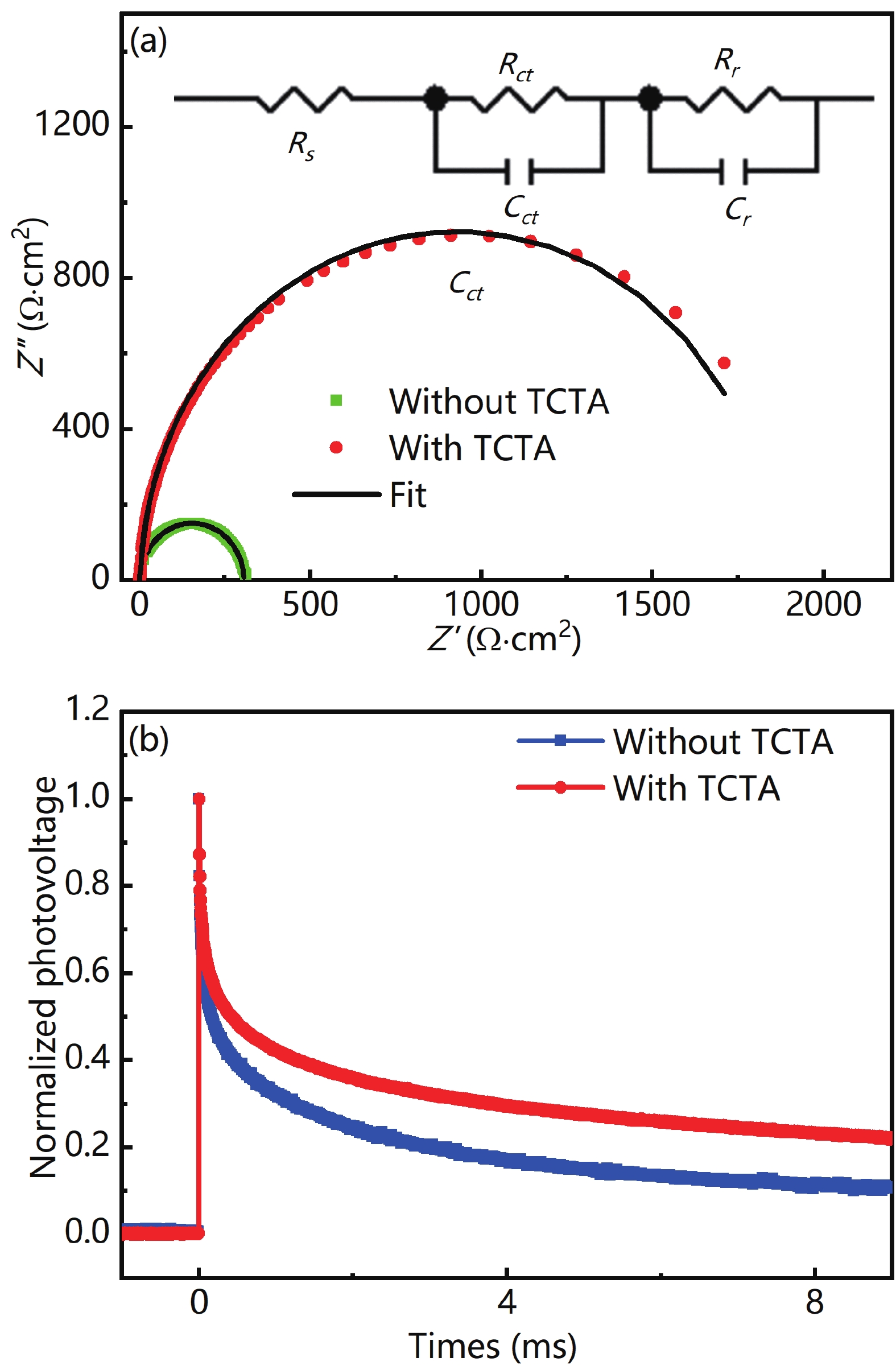
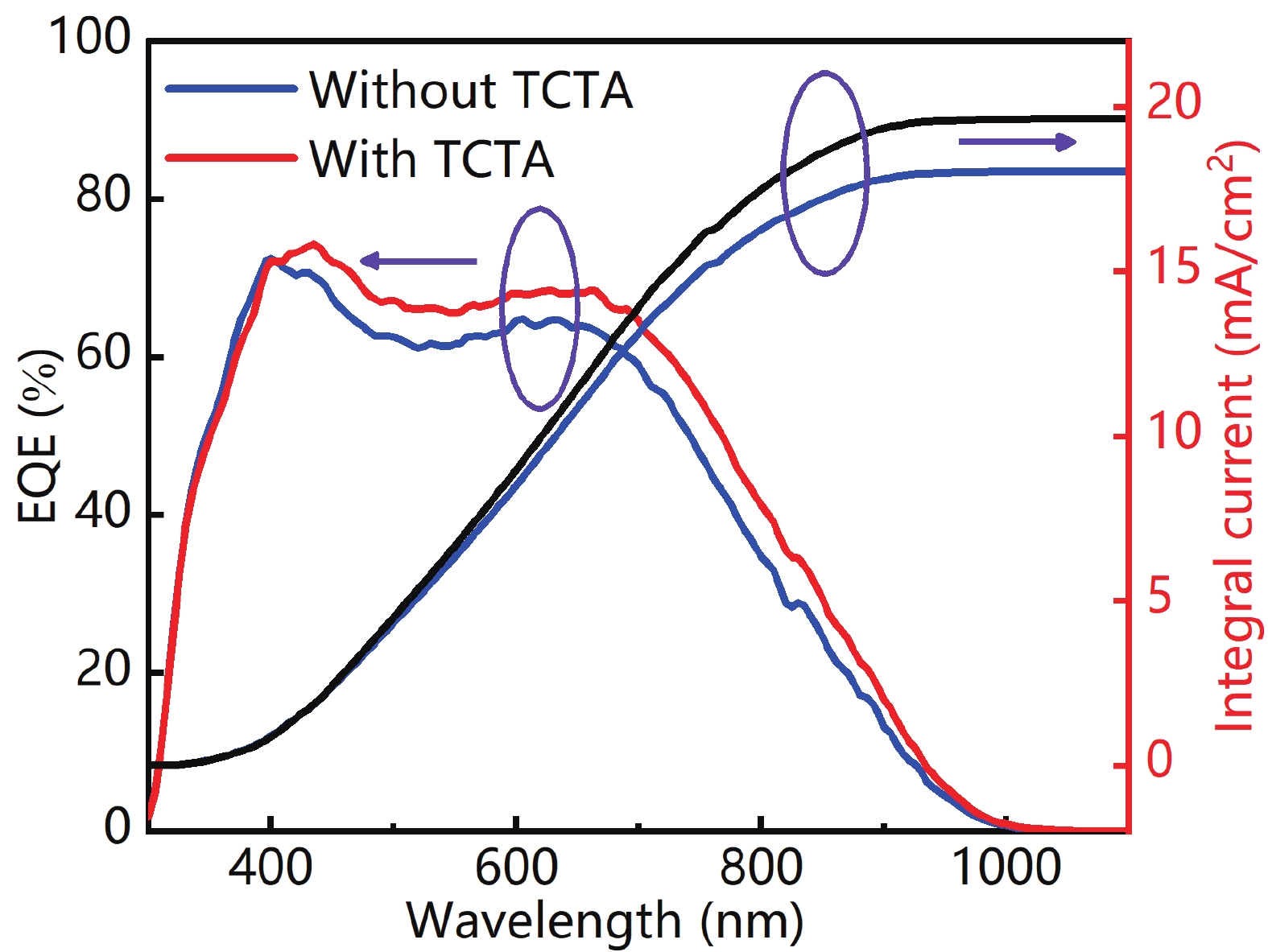










 Yujie Hu:is a master student at School of Physics, Dalian University of Technology. She received her BS from Jining University in 2019. Her research focuses on solar cells
Yujie Hu:is a master student at School of Physics, Dalian University of Technology. She received her BS from Jining University in 2019. Her research focuses on solar cells Chuanhui Cheng:is an associate professor at School of Physics, Dalian University of Technology. He received his PhD from National Integrated Optoelectronics laboratory, College of Electronic Science and Engineering, Jilin University, in 2007. His research focuses on solar cells
Chuanhui Cheng:is an associate professor at School of Physics, Dalian University of Technology. He received his PhD from National Integrated Optoelectronics laboratory, College of Electronic Science and Engineering, Jilin University, in 2007. His research focuses on solar cells





